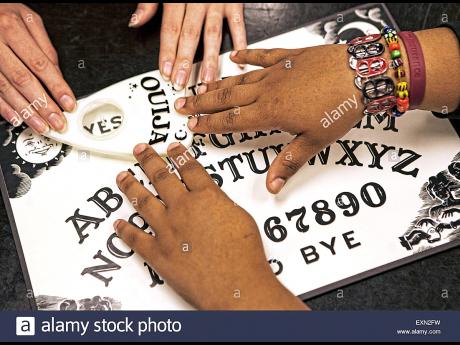Religion & Culture | The Ouija Board: More than just a game
Most of us have heard of The Exorcist, a 1973 horror classic that is based on a true story.
It centres on possession of a girl who inadvertently contacted a malevolent spirit while playing with an Ouija Board. The film was adapted from the 1949 case of a 14-year-old Missouri boy whose aunt, a spiritualist, introduced him to this so-called game.
It wasn’t long before poltergeist-like experiences began occurring. Furniture began moving across the room, the boy’s bed shook violently and scratching sounds were heard inside the walls. The boy’s psycho-emotional, physical and neurological state deteriorated rapidly.
Up to nine Jesuit priests began performing the Exorcism Rite of the Roman Catholic Church.
It took an astounding nine months to fully alleviate the boy’s suffering. In fact, at one point during the ritual, the word ‘Hello’ was visible on his chest and scratches and bruises appeared on his body.
The incredulous ordeal was featured on the front page of the Washington Post newspaper.
The movie rekindled interest in an instrument that was initially created for entertainment purposes at the turn of the 20th century.
But entertainment has since been supplanted by sinister experiences. Tales of hauntings, foul odour, burn marks, obsession and possession are now associated with the board, a compressed wood with letters and numbers that includes a pointer to spell out messages.
HOW IT WORKS
Players, usually two or more, gingerly place their fingers on the pointer and ask questions.
The pointer moves towards the letters, spelling out the response.
Usually, those who use the board are young, impressionable and excitable, asking questions concerning love interests and the future. More seasoned users, such as psychics and mediums, question spirits on more philosophical and metaphysical subjects.
The board has become occult paraphernalia used to contact the spirit world, and continues to be a subject of discourse, especially in religious circles. It is condemned by the religious and discussed in cautionary terms by the most seasoned of spiritualists.
Of the Ouija Board, the Roman Catholic Church’s position is unambiguous. “We have the testimony of the church’s exorcists. Their experience shows that the Ouija Board is far from harmless. Some investigating supernatural phenomena from a Catholic perspective have gone so far as to say that 90 per cent of their worst cases involving demonic activity have been linked to the use of the Ouija Board.”
Interestingly, Catholics and psychics sometimes make strange bedfellows. Psychic researcher Dale Kaczmarek warns: “Most often the spirits who are contacted through the Ouija are those who reside on the lower astral pane. [They] are often very confused and may have died a violent or sudden death; murder, suicide, etc. Therefore, many violent, negative and potentially dangerous conditions are present to those using the board.
“The real danger lies when you ask for physical proof of their existence. What you have just done is simple, you have opened a doorway and allowed them to enter into the physical world and future problems can and often do arise.”
THE UNCONSCIOUS MIND
Admittedly, not everyone is sold on the ‘Ouija-Spirit’ connection.
Writing for Psychology Today, (May 16, 2012), Dr Scott G. Eberle explains the phenomenon behind the board, citing a psycho-physiological principle called Ideomotor Action (also called Ideometer Effect and Ideometer Phenomenon).
“Our keen expectations for a certain outcome will sometimes direct the movements of our arms and hands as the pointer glides easily (along the board).” He also mentions “suspension of disbelief” and the role of the unconscious mind in producing desired or expected answers.
Eberle is convinced that the success or accuracy of the Ouija Board has nothing to do with malignant spirits.
Worth mentioning is some of the elucidating work that this controversial game has produced.
For example, author Jane Roberts contacted the entity Seth while using a Ouija Board.
She went on to channel this spirit, resulting in many books covering complex subjects such as quantum physics, consciousness, the nature of personal reality and the eternal validity of the soul. The Seth material is now part of Yale University Library Archival Collection.
Still, overwhelming evidence points to the psychological damage caused by using the Ouija Board.
Depth psychology explores the vast, unexplored landscape of the subconscious. It teaches that fears, phobias, neuroses and anxieties are hidden away, locked for our own preservation.
When the board is used, the mental guard is dismantled and the subconscious with all its psychological complexes emerges. These complexes take their toll and self-induced possession is very real at this point. That there are spirits on the astral plane lurking, awaiting the users’ invitation to manifest and wreck havoc is anyone’s guess.
But we are well advised against using the Ouija Board whether the phenomena produced are caused by the users’ subconscious or actual spirits invading their mental and physical space.
In reality, both scenarios bear the same bitter fruit.
- Dr Glenville Ashby is the author the newly released, ‘The Mystical Qigong Handbook for Good Health’, now available on Amazon kindle and hard copy.Feedback: glenvilleashby@gmail.com or follow him on Twiter@glenvilleashby


